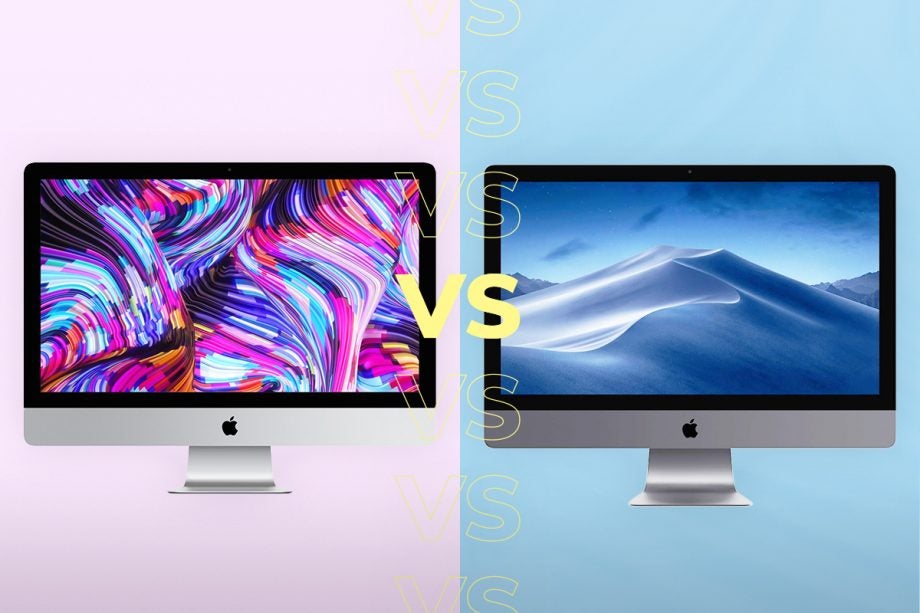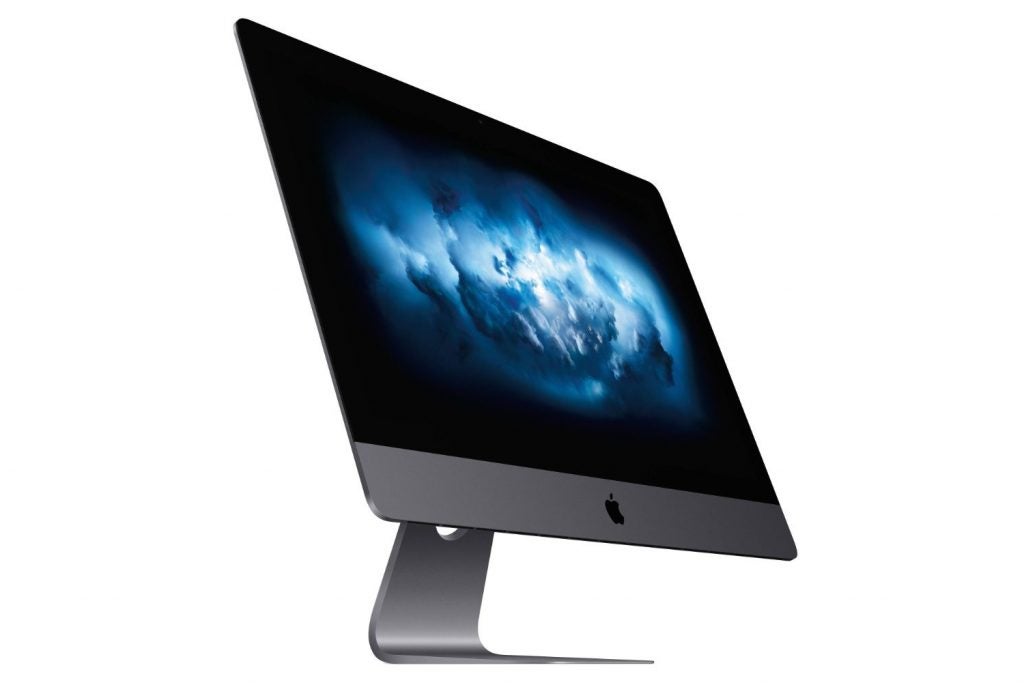iMac vs iMac Pro: Which Apple desktop should you buy?

A new iMac has arrived, packing more power than ever before. In fact, its specs are so impressive that it’s threatening to disturb the status quo of Apple’s desktop range.
Traditionally, the iMac has already been pitched as the entry-level desktop that excels at basic computing tasks, while the iMac Pro is aimed at creative professionals who need as much performance power as possible to whizz through creative tasks.
Such a pecking order largely remains intact, with the retail price of the regular 27-inch iMac starting at £1799 and the 27-inch iMac Pro seeing a base price of £4999.
But spec up the iMac to iMac Pro levels and things start to overlap. In fact, a specced up iMac costing £4099 may actually be better value than the entry-level iMac Pro.
Related: iMac 2020
iMac vs iMac Pro specs – Which is more powerful?
Let’s get one thing clear, the iMac Pro undoubtedly has the highest performance ceiling out of the two Apple desktops. Upgrade all the specs to the maximum, and iMac Pro will feature an 18-core Intel Xeon processor, 256GB DDR4 RAM, Radeon Pro Vega 64X graphics and a 4TB SSD.
Meanwhile, the standard 27-inch iMac has far more entry-level spec options available than the Pro, driving the price down to a far more reasonable £1799. However, if you’re looking for a base iMac Pro performance level, things get a little more complicated.
We upgraded the iMac specs to around the same level that the iMac Pro offers, ensuring you get the same 32GB DDR4 RAM, 1TB SSD and 10 Gigabit Ethernet. The only real differences are the processor and graphics card.
| iMac | iMac Pro | |
| Price | £4099 | £4999 |
| Display | 27-inch Retina 5K | 27-inch Retina 5K |
| Processor | 10-core 10th-gen Intel Core i9 | 10-core Intel Xeon W |
| RAM | 32GB DDR4 | 32GB DDR4 |
| Graphics | Radeon Pro 5700 XT | Radeon Pro Vega 56 |
| Storage | 1TB SSD | 1TB SSD |
| Ethernet | 10 Gigabit | 10 Gigabit |
| Dimensions | 650 x 516 x 203 mm | 650 x 516 x 203 mm |
| Weight | 8.9 kg | 9.7 kg |
The base iMac Pro features a 10-core Intel Xeon W processor, which sees a 3.0GHz base frequency speed that can turbo boost up to 4.5GHz. Meanwhile, the top-spec iMac packs a 3.6GHz 10-core 10th-generation Intel Core i9 processor that can turbo boost up to up to 5.0GHz.
Judging purely from the numbers (as we’re yet to actually test the iMac Pro 2020) then it looks like the standard iMac has the edge. That said, the iMac Pro can be configured with Xeon processors with even higher core counts.
The specced out 27-inch iMac also arguably has an edge over the base iMac Pro in terms of graphics thanks to the Radeon Pro 5700 XT. Online benchmark data suggests it offers a better GPU performance than the Radeon Pro Vega 56, which makes sense since AMD launched it more recently.
This all means that the £4099 iMac is actually (at least on paper) more powerful than the £4999 iMac Pro. Outside of these configurations though, things largely return to normal with the iMac catering to casual users, while the iMac Pro is designed for power-hungry professionals.
Related: Best Desktop PC

Apple’s new iMac 2020
iMac vs iMac Pro screen – Which has the best display?
The 27-inch iMac and iMac Pro feature the same 5K Retina display, with claimed 500 nits brightness and Wide colour (P3) gamut coverage.
The standard iMac has one advantage in that you’re given the option of upgrading to a nano-texture glass that helps to prevent glare. This feature will cost you an additional £500 though, so it doesn’t come cheap.
The standard iMac also has a smaller 21.5-inch model available if you’re looking to save desk space. However, this model has an even lower spec ceiling than the 27-inch iMac, featuring outdated 8th-gen Intel Core processors, so it’s only worth considering if you only need a desktop for casual use.
iMac vs iMac Pro design – Which looks the best?
The 27-inch iMac and iMac Pro have an almost identical design, with the only real difference being the colour options, with the former coated in white and the latter embracing a dark silver look.
The dimensions are the exact same for both all-in-one PCs, although the Pro looks to be slightly heavier at 9.7 kg. That likely depends on what components you’re filling the machines with though.
The port options also differ slightly, with the iMac Pro seeing double the Thunderbolt 3 (USB-C) connections. The standard iMac also has a standard Gigabit Ethernet port at default, although that can be configured to the same 10 Gigabit offering the Pro boasts. Otherwise, all of the other ports remain the same across the board, including 3.5mm headphone jack, SDXC card slot and 4x USB-A.
Related: Best Mac 2020

iMac Pro
iMac vs iMac Pro verdict – Which is better?
As we haven’t reviewed the latest models of either the iMac or iMac Pro, we cannot say for certainty which is better. But by judging the spec sheets, it’s clear they cater to very different audiences.
The standard iMac is the best option for casual users who just want to browse the web, fill up spreadsheets and stream video. The iMac Pro, meanwhile, is generally the better option if you plan on editing video, animating 3D models or doing anything else that requires a lot of performance power.
That said, if you’re an entry-level creator or simply don’t plan on pushing the CPU or GPU to ridiculous heights, it’s worth exploring the high-end configuration options of the standard iMac. Since it’s recently been refreshed with new Intel and AMD components while still remaining relatively affordable, it’s very much possible to get a better deal than the iMac Pro without sacrificing on quality.
It’s also worth bearing in mind that Apple is planning to launch new models of both the iMac and iMac Pro within the next two years, featuring the all-new Apple Silicon. Both of these could arrive as soon as 2021, so if you’re willing to wait a year or so, you may well get an even better deal.


